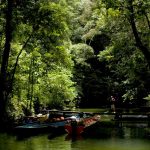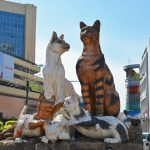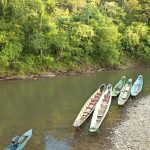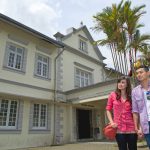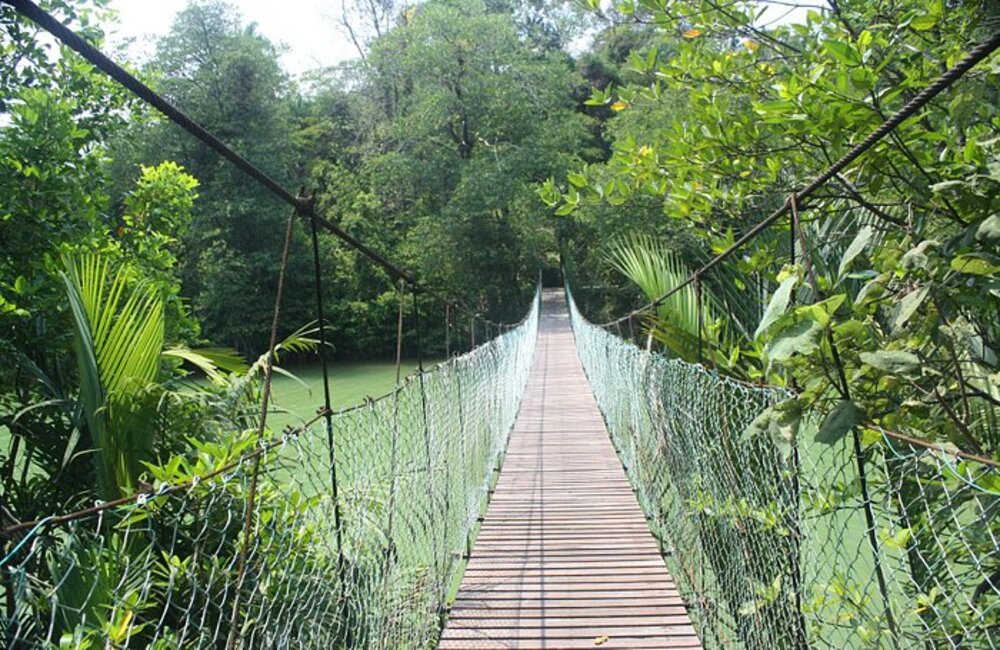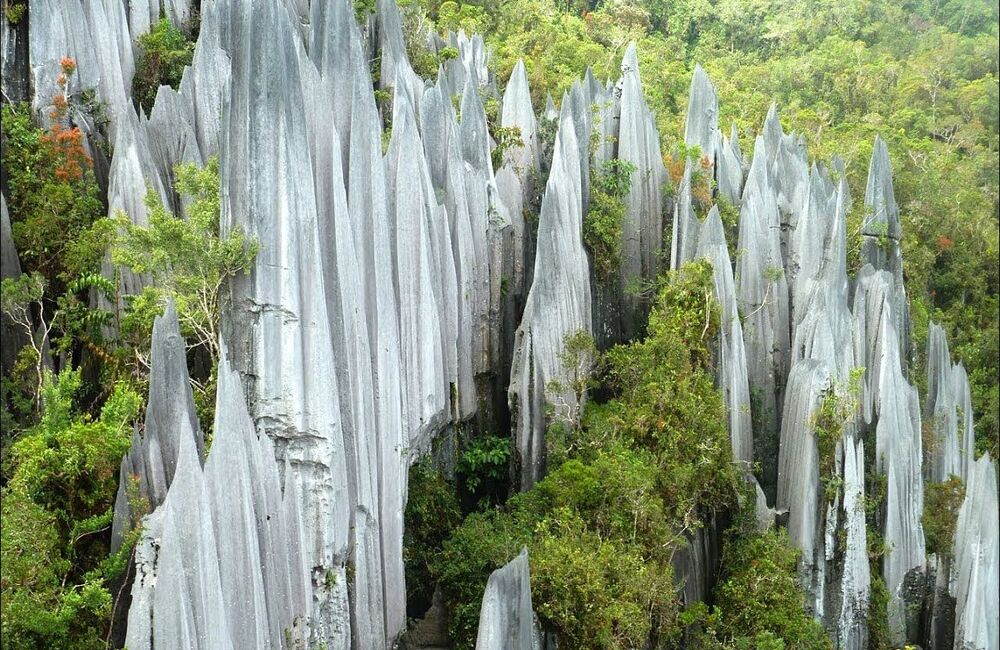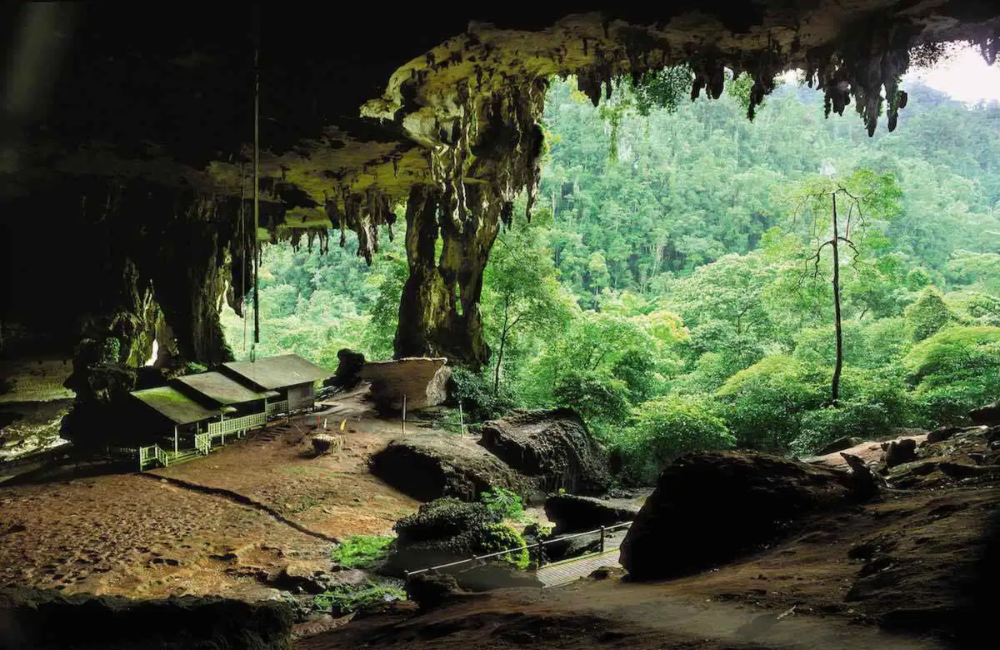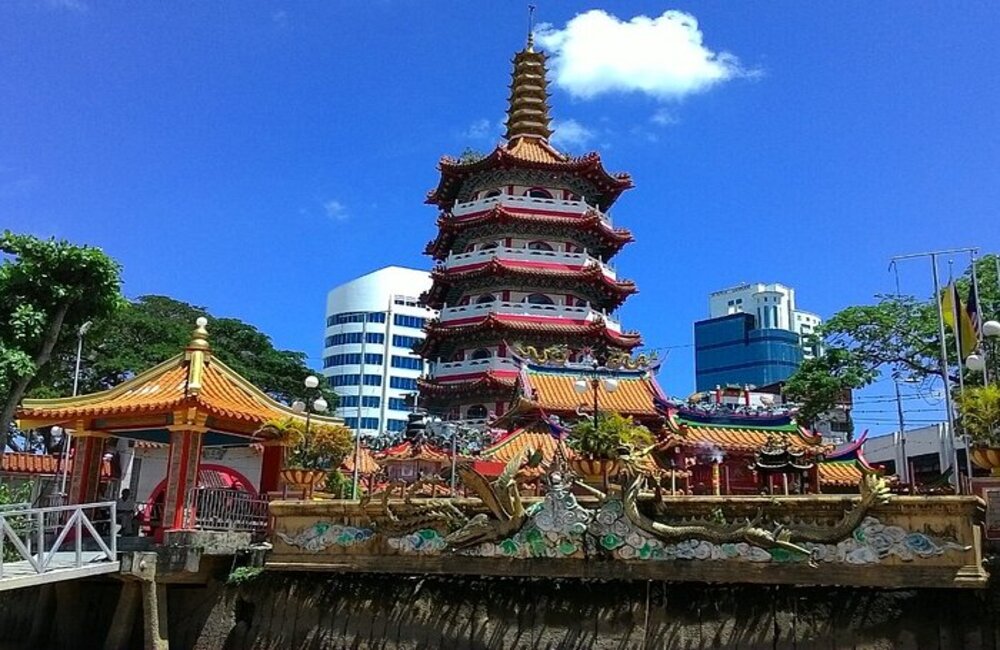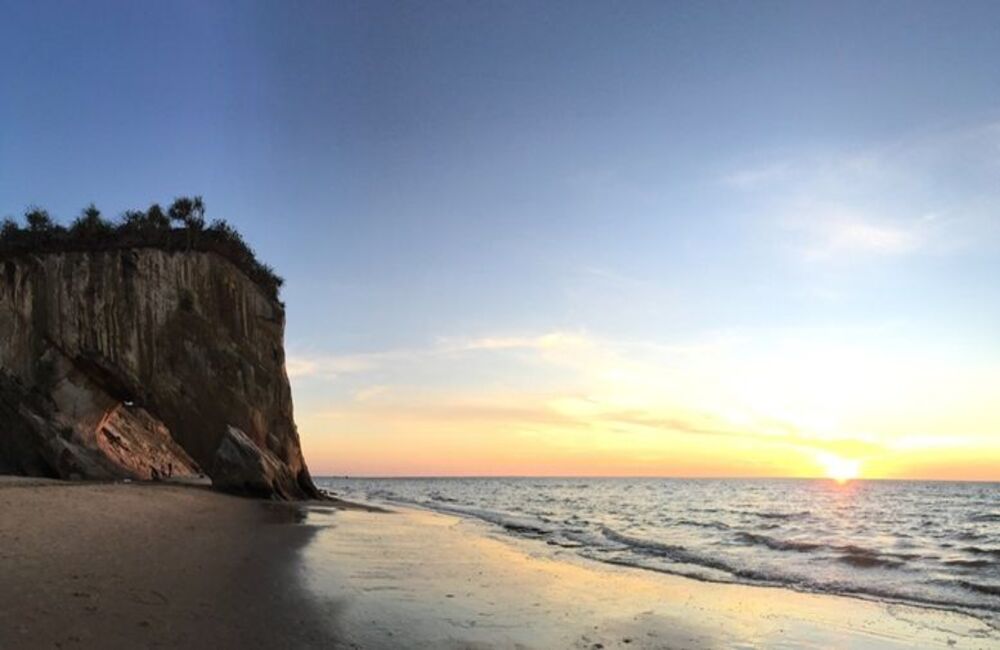Sarawak, Malaysian Borneo
Lies in East Malaysia and shares the island of Borneo with the eastern state of Sabah, the separate country of Brunei and the Indonesian provinces of Kalimantan.
Sarawak, Malaysian Borneo
Sarawak makes access to Borneo’s natural wonders and cultural riches a breeze. From Kuching, the island’s most dynamic city, pristine rainforests – where you can spot orangutans, proboscis monkeys, crocodiles and the world’s largest flower, the rafflesia – can be visited on day trips, with time in the evening for a tasty meal and a drink by the waterfront. More adventurous travellers can take a ‘flying coffin’ riverboat up the ‘Amazon of Borneo’, the Batang Rejang, on their way east to hike from longhouse to longhouse in the cool environs of the Kelabit Highlands, or to the spectacular bat caves and extraordinary rock formations of Gunung Mulu National Park. For the best chance of seeing an orangutan in the wild, venture to the Batang Ai region. Everywhere you go, you’ll encounter the warmth, unforced friendliness and sense of humour that make the people of Malaysia’s most culturally diverse state such delightful hosts.
History
One of the stranger episodes in Sarawak history began in 1841 when James Brooke, an English adventurer armed only with a single ship (the Royalist) and diplomatic skills, was made Rajah of Sarawak by the Sultan of Brunei. James and his nephew and successor Charles expanded their private colony to cover much of the state. The third Rajah, Vyner, continued to develop the colony but fled from the invading Japanese in 1941, ending the Brooke dynasty after precisely 100 years. After the end of the Japanese occupation, Vyner returned to Sarawak in April 1946, but ceded the colony to the British in July of the same year. Sarawak joined together with Singapore, Federation of Malaya and North Borneo (today Sabah) to form the Federation of Malaysia in 1963.
Natural Surroundings
Sarawak, the largest state in Malaysia, is a land where nature still reigns supreme. Situated on the northwestern coast of Borneo, it is blessed with an incredible diversity of landscapes — from sprawling rainforests and winding rivers to limestone mountains, coastal mangroves, and offshore islands. The state’s vast wilderness areas make it one of Southeast Asia’s most biologically rich regions, often described as the heart of Borneo’s natural heritage.
Among Sarawak’s many treasures is Gunung Mulu National Park, a UNESCO World Heritage Site famous for its dramatic limestone pinnacles, vast cave systems, and lush rainforest ecosystem. The park’s Deer and Lang Caves are home to millions of bats that create a spectacular evening exodus, while the towering Mulu Pinnacles rise sharply above the jungle canopy, offering unforgettable views. Other notable natural attractions include the Niah Caves, where prehistoric paintings and human remains have been discovered, and Bako National Park, known for its coastal cliffs, secluded beaches, and unique wildlife such as proboscis monkeys and silvered leaf langurs.
Sarawak’s waterways form the lifeblood of its interior. The mighty Rejang River, Malaysia’s longest, flows deep into the rainforest, connecting remote Iban longhouses and indigenous communities that still maintain traditional ways of life. The state also shelters rare and endangered species within its protected areas, including the Semenggoh Wildlife Centre, which plays a key role in rehabilitating orangutans. For travelers seeking untouched nature, the Batang Ai and Lanjak Entimau reserves offer pristine rainforest experiences far from urban life, while the coastal regions and islands near Kuching and Miri feature coral reefs and mangroves teeming with marine biodiversity.
From its mist-shrouded highlands and ancient caves to its vibrant rivers and tropical forests, Sarawak’s natural surroundings capture the very essence of Borneo’s wild beauty. It is a place where adventure, conservation, and cultural heritage coexist in harmony — offering visitors an authentic encounter with nature in one of the world’s last great rainforests.
.
Culture
Even by Malaysian standards Sarawak has an extraordinary mix of peoples: the largest ethnic group is neither Chinese (26%) nor Malay (21%), but the Iban (29%), who gained worldwide notoriety as the fiercest headhunters on Borneo. Back in the bad old days, an Iban lad couldn’t hope for the hand of a fair maiden without the shrunken head of an enemy to call his own, and bunches of totemic skulls still decorate the eaves of many a jungle longhouse. Fortunately for visitors, headhunting hasn’t been practiced for a while, although some of the skulls date from as late as World War II when, with British support, Iban mercenaries fought against the occupying Japanese. Other tribes of note include the Bidayuh (8%) and the Melanau (5%), as well as a smattering of Kenyah, Kayan and a group of tiny tribes in the deep heartland known collectively as the Orang Ulu (Malay for “upriver people”).
Get In
Alone among Malaysia’s states, Sarawak maintains an autonomy on immigration control, mostly so mainlanders cannot freely immigrate and swamp the thinly populated state. Even if coming in from elsewhere in Malaysia, Malaysians need to bring along their ID and are restricted to a stay of 90 days at a time. Other foreigners need to fill out a second immigration form.
Still, for most travellers this is just a formality and an interesting extra stamp in their passport, as anybody who does not need a visa for Malaysia can get a free 90-day visit permit on arrival. If you do need an advance visa for Malaysia, you’ll need one specifically for Sarawak, so be sure to state this when applying at the Malaysian embassy.
Bumi Kenyalang
Sarawak at a glance
![]()
- Country: Malaysia
- Capital: Kuching
- Area: 124,450 km2
- Population: 2,600,000
Highlights
- Bako National Park: Home to the bizarre, obscene-nosed proboscis monkey.
- Bukit Lambir National Park: Known for its beautiful water falls and tranquility.
- Loagan Bunut National Park: Home to the friendly community of Orang Ulu people known as the Berawan whom are mostly fishermen in this part of Sarawak.
- Gunung Gading National Park: Where you can try to spot a Rafflesia, the world’s largest flower.
- Gunung Mulu National Park: With mighty Mount Mulu and some of the world’s largest cave system.
- Talang-Satang National Park: Established with the primary aim of conserving Sarawak’s marine turtle population.
- Semengoh: Home to a famous orangutan sanctuary and rehabilitation center.
- Rajang River: The mighty Rajang River, Malaysia’s longest river, is the main “highway” connecting little towns and longhouses in Sarawak’s hinterland.
Dos and Don’ts
- Respect Indigenous Traditions: When visiting Iban, Bidayuh, or Orang Ulu longhouses, follow local etiquette—remove shoes before entering, accept food/drink offered, and ask before taking photos.
- Try Local Dishes: Don’t miss Sarawak laksa, kolo mee, and midin (jungle fern).
- Explore National Parks: Visit Bako, Gunung Mulu (UNESCO site), and Niah Caves—go with guides where required.
- Support Community-Based Tourism: Stay at homestays or eco-lodges to directly benefit local families.
- Be Polite During Gawai Festival: If you’re invited to a harvest festival celebration, accept hospitality graciously and pace yourself with the rice wine!
- Don’t disrespect Sacred Sites or Rituals: Some caves, mountains, and longhouse areas have deep spiritual meaning—listen to your hosts’ guidance.
- Don’t litter in Nature Reserves: Sarawak’s rainforests and caves are delicate ecosystems—take trash back with you.
- Don’t overstep in Longhouses: Don’t walk straight into private areas—wait for an invitation from the head of the house.
- Don’t handle Wildlife: Orangutans, hornbills, and other species should never be touched or fed.
- Don’t assume Everyone Has the Same Customs: Sarawak is highly diverse—different communities may have unique taboos or practices.
